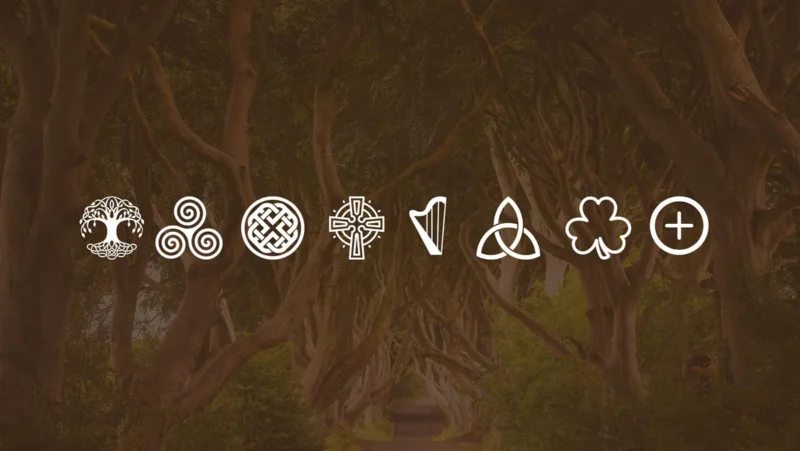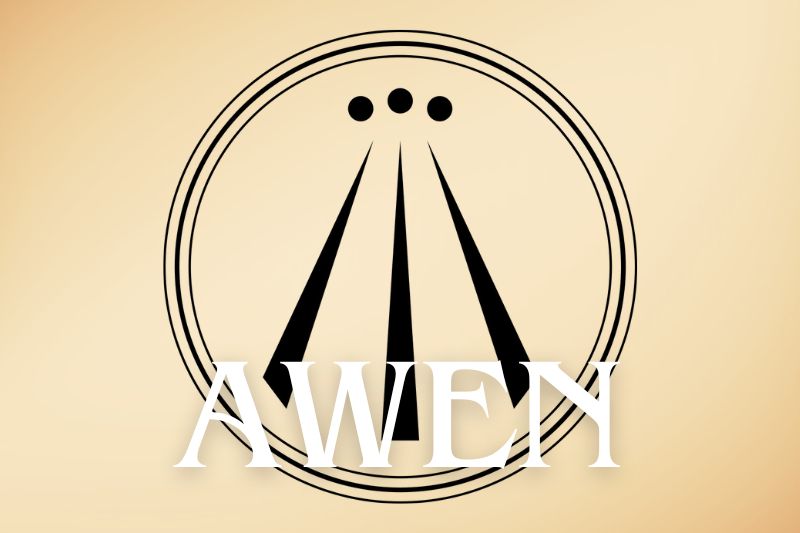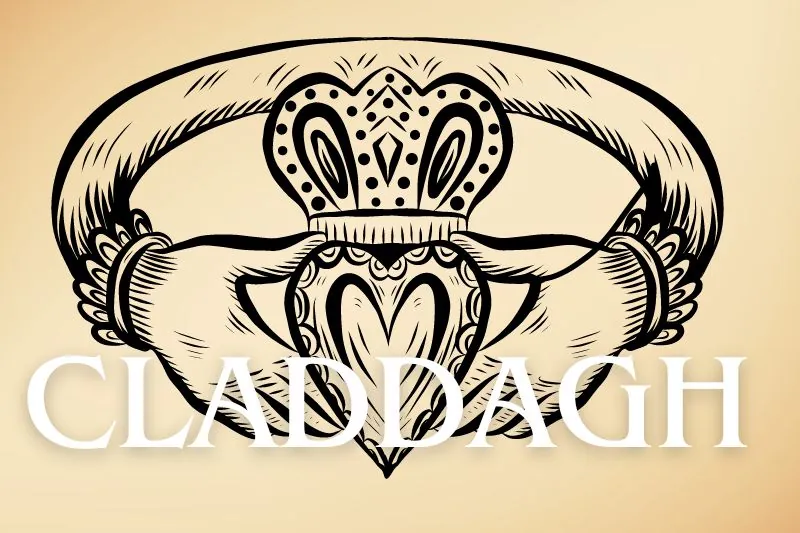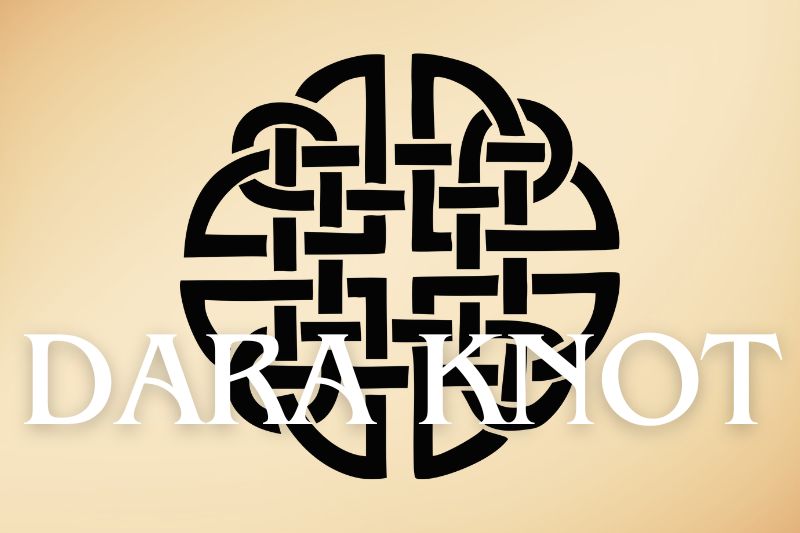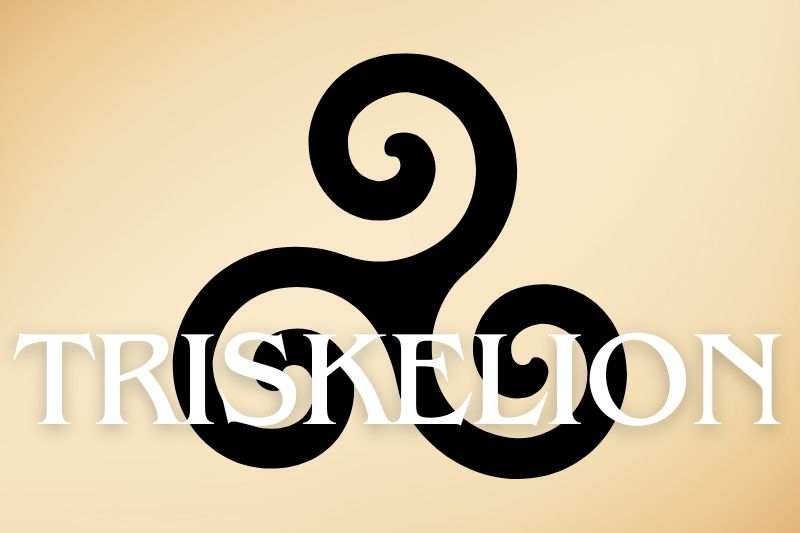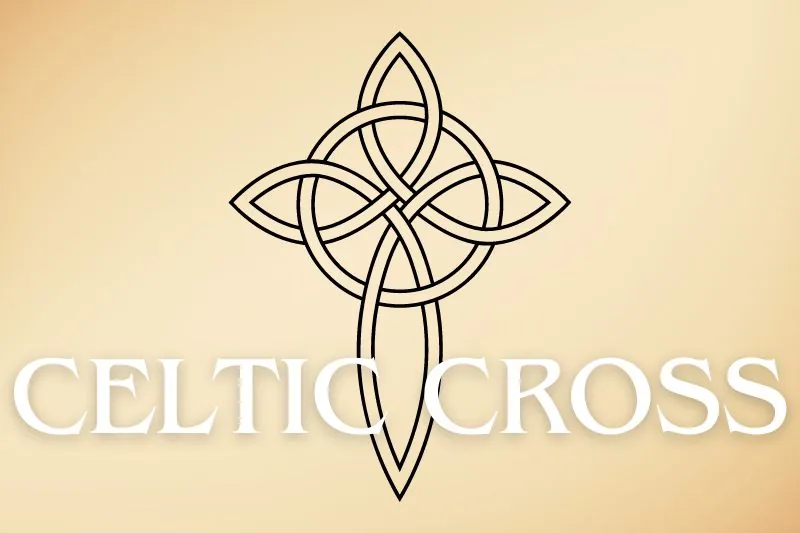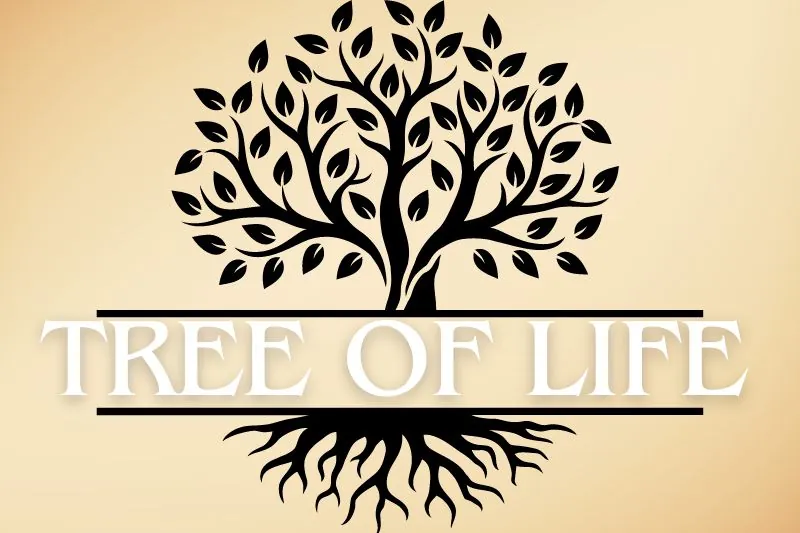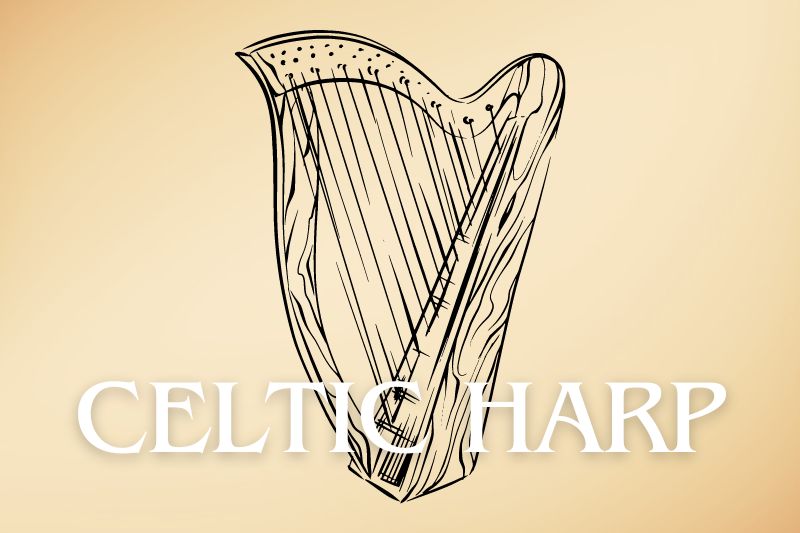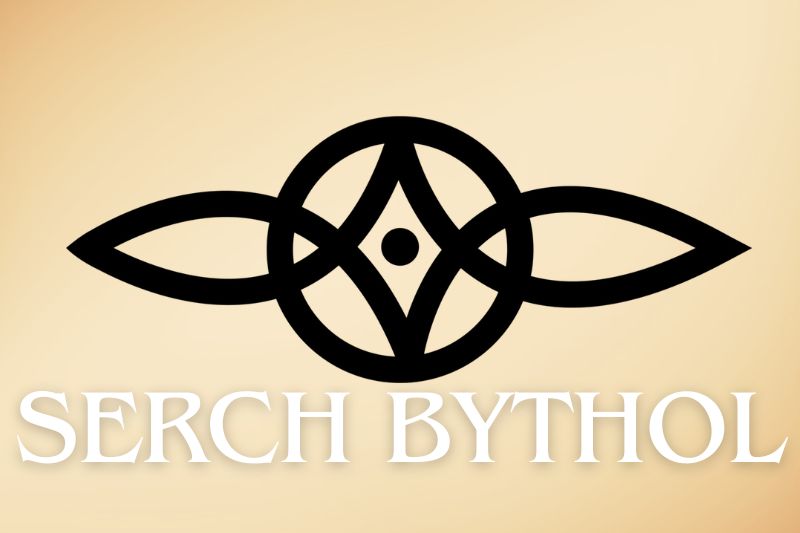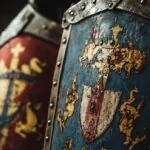If you’re like me, you find ancient symbols fascinating. But let’s be honest, most of us don’t have a clue what they actually mean.
And while you’re out there slapping a tattoo of a Celtic knot on your arm, you might want to know if it represents love or, heaven forbid, something like a bad hair day.
Today, I will talk about ten Celtic symbols that represent spiritual guidance and have different types of spiritual meaning. Let’s get into it.
1. The Triquetra
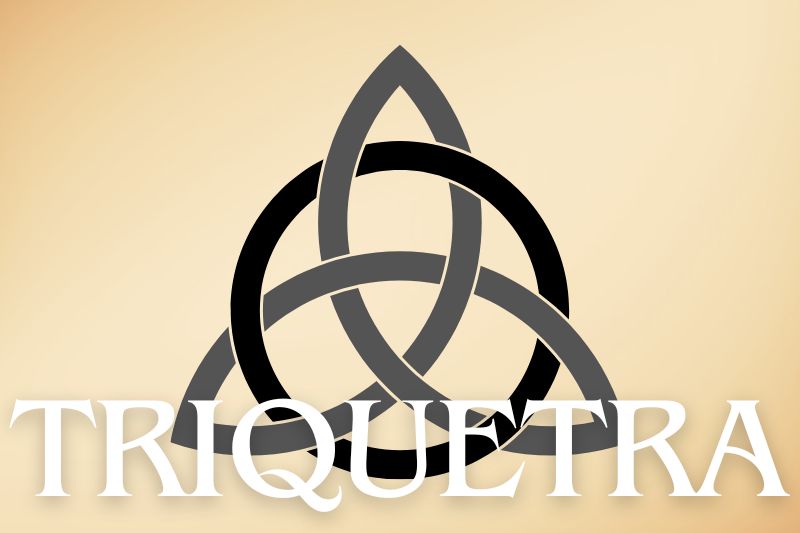
The Triquetra, also known as the Trinity Knot, is everywhere. It’s got three points and usually, some kind of loop. It represents things in threes – like life, death, and rebirth, or mind, body, and soul.
Christians co-opted it to symbolize the Holy Trinity. So, if you’re a pagan or just into Irish history, you might want to reclaim it.
Interesting Facts About This Symbol
- Ancient Origins: The Triquetra is an ancient symbol with its exact origin unknown, but it’s believed to be at least 5,000 years old. It has been found across different cultures globally, dating back to the 4th century BC.
- Appearance in Celtic Art: The symbol first appeared in Celtic insular art around the 7th century, notably in the Book of Kells. It was also carved into Celtic Crosses and used in various religious manuscripts and stonework from the time of Celtic Christianity.
- Symbolic Design: The Triquetra is made from one continuous line that forms three pointed arcs, representing themes like eternity or infinity due to its never-ending path.
- Christian Connection: In Christianity, the Triquetra is associated with the Holy Trinity. It’s believed that the symbol was used by Celts before converting to Christianity and later adopted by missionaries as a teaching aid.
- Modern Variations: Modern interpretations of the Triquetra sometimes include a circle interwoven with the symbol, representing eternal love. This variation is sometimes referred to as the ‘Irish Love Knot.’
2. The Awen
The Awen symbol looks like three rays of light emanating from a single point. Poets and bards used it as their muse, believing it represented inspiration.
Three’s a recurring theme in Celtic mythology. Also, Awen means “essence” or “inspiration” in Gaelic. So, if you’re feeling particularly deep or need a spark of creativity, this might be your go-to.
Interesting Facts About This Symbol
- Origins: The Awen symbol represents essence, inspiration, and poetic creativity in Celtic culture. It is depicted as three rays leading up to three dots, surrounded by three circles, symbolizing the harmony of opposites and the balance of human nature.
- Historical Significance: The concept of Awen has been part of Celtic lore for centuries, but its representation as a symbol is more recent. The first written mention of Awen is found in the 9th-century text, “Historia Brittonum,” authored by Nennius.
- Religious Context: Initially significant in Pagan beliefs, Awen was associated with the muse-like inspiration for artists and creative writers, known as Awenydd. The concept persisted through the Christianization of Britain and Ireland and was later revived by Neo-Druids.
- The Three Rays of Light: The Awen is often interpreted as three rays of light, with the number three holding sacred importance in Druidry and Celtic culture. These rays can represent various trinities, such as mind, body, spirit; land, sea, sky; or love, wisdom, truth.
- Modern Usage: Today, the Awen symbol is embraced by Neo-Druidism and has become popular in modern times. It is often found in tattoos, jewelry, and clothing, symbolizing a connection with nature, spirituality, and the creative force.
3. The Claddagh
The Claddagh isn’t just a fancy ring design. It’s a heart (love), with hands (friendship), topped by a crown (loyalty). Pretty straightforward.
Give it to someone you care about, or just wear it to ward off people who don’t get what loyalty means.
Interesting Facts About This Symbol
- Origins: The Claddagh symbol originates from a small fishing village named Claddagh in Galway, Ireland. It dates back to the 17th century and is associated with the Joyce family, particularly Richard Joyce, a silversmith who is credited with creating the design.
- Symbolism: The Claddagh comprises two hands holding a heart topped with a crown. Each element symbolizes a different quality: the hands represent friendship, the heart signifies love, and the crown stands for loyalty.
- Usage in Jewelry: Traditionally, the Claddagh is used in rings and is a popular choice for engagement and wedding rings in Ireland, symbolizing a union or bond between couples.
- Meaning in Gaelic: The word ‘Claddagh’ comes from the Gaelic word ‘fáinne Chladaigh’, which means ‘flat stony shore’. It’s a nod to the rocky beaches of the west of Ireland where the symbol originated.
- Cultural Impact: The Claddagh ring has transcended its origins to become a beloved symbol of Irish heritage and is recognized worldwide. It’s not just a piece of jewelry but a representation of Irish identity and the values of love, friendship, and loyalty.
4. The Dara Knot
The Dara Knot is based on the root system of an oak tree, which was sacred to the Celts. It symbolizes strength, wisdom, and endurance. You could say it’s like nature’s way of telling you to seek inner strength.
Interesting Facts About This Symbol
- Origins: Derived from the Irish word “doire” which means oak tree, the Dara Knot is a symbol that pays homage to the sacred oak tree, highly revered by the ancient Celts.
- Symbolism: The intricate design of the Dara Knot is said to represent the root system of an oak tree, symbolizing strength, power, endurance, and wisdom.
- Usage in Art: In Celtic art, the Dara Knot can be found on various items such as jewelry, manuscripts, and stone carvings, indicating its importance in different forms of artistic expression.
- Its Place in Culture: It’s believed that wearing or displaying the Dara Knot can bring about personal transformation and inner strength, connecting individuals with the rich cultural and spiritual heritage of the Celts.
- The Eternal Cycle: The Dara Knot’s design is endless, with lines intertwining and interlocking without a clear beginning or end, symbolizing the eternal cycle of life and nature’s interconnectedness.
5. The Triskelion
The Triskelion, or Triple Spiral, is another triad-based symbol. It’s been around for thousands of years and represents motion and progress.
The idea is that life is a constant movement, and you need to keep evolving. So, if you’re stuck in a rut, look at the Triskelion and remind yourself to keep going.
Interesting Facts About This Symbol
- Ancient Origins: The Triskelion is much older than the Celtic civilization itself. It was found on the Newgrange tomb in Ireland, which predates the arrival of the Celts by over 2,500 years.
- Adopted by Celts: Despite not being its creators, the Celts extensively used the Triskelion in their carvings, artwork, and metalwork, likely because of its tripartite design, which resonated with their belief in the significance of the number three.
- Multiple Meanings: The Triskelion is subject to various interpretations. Some believe it symbolizes strength, progress, and the ability to move forward, while others think it represents the three realms: the physical, the spiritual, and the celestial.
- A Symbol Across Cultures: This symbol is not exclusive to the Celts; it has appeared in many cultures worldwide, from the Neolithic to the Bronze Age, including on Greek ships and in Sicilian iconography.
- Modern Usage: The Triskelion continues to be a relevant symbol today. It has been featured on the seal of the United States Department of Transportation, as the roundel of the Irish Air Corps, and even on the flag of the Isle of Man.
6. The Celtic Cross
The Celtic Cross is basically a regular cross with a circle around the intersection. It blends Christian and pagan elements, symbolizing faith and eternity.
It is a beautiful symbol that can show you’re into both ancient history and religion. Aside from all of that, it looks pretty cool.
Interesting Facts About This Symbol
- Origin: The Celtic Cross is believed to have originated during the Early Middle Ages, between the 5th and 8th centuries.
- Symbolism: The distinctive ring of the Celtic Cross, often decorated with intricate patterns, is thought to represent the sun, eternity, or the halo of Christ.
- St. Patrick’s Influence: One theory suggests that St. Patrick combined the cross of Jesus Christ with the circular pattern of the pagan sun god to create the Celtic Cross.
- Public Monuments: In medieval times, the Celtic Cross was used as a public monument, and when marking a holy site, they had longer stems and were called Irish high crosses.
- Artistic Feature: The Celtic Cross is a key feature in Celtic insular art and is known for its ornate design and historical significance.
7. The Tree of Life
The Tree of Life is a pretty common symbol, and pretty much every culture has one. The Celtic version shows branches reaching to the sky and roots spreading into the earth, symbolizing the connection between heaven and earth.
It’s a reminder that we’re all connected. It’s also just a nice metaphor for personal growth and grounding yourself.
Interesting Facts About This Symbol
- Vital to Daily Life: For the ancient Celts, trees were essential for survival, providing shelter, food, and heat. They were also home to wildlife that the Celts relied on.
- Spiritual Significance: The Celts saw the oak tree, one of the tallest in the forest, as a conduit between the heavens and earth due to its tendency to attract lightning, which they interpreted as a divine sign.
- Symbol of Strength: The Tree of Life represents strength, with its branches reaching towards heaven, its trunk on earth, and its roots extending into the underworld, symbolizing the connection between all realms.
- Community Centerpiece: When establishing a new community, the Celts would plant a tree at its center, known as the ‘Crann Bethadh’ or ‘Tree of Life’, under which important community gatherings would take place.
- Battle Tactics: In times of war, the Celts believed that cutting down their enemies’ Tree of Life would ensure victory, as it was seen as a doorway to the spiritual world and a source of their strength.
8. The Shamrock
Everyone knows the shamrock – thanks to St. Patrick. It’s got three leaves (again with the threes) and was used to explain the Holy Trinity to the Irish pagans.
But beyond that, it’s a symbol of luck. So, if you’re superstitious or just Irish, a shamrock might be a handy little charm to carry around.
Interesting Facts About This Symbol
- Symbol of St. Patrick: The Shamrock is famously associated with St. Patrick, the patron saint of Ireland. It is said that he used the three-leafed plant to explain the concept of the Holy Trinity to the pagan Irish during the fourth century.
- National Emblem: The Shamrock is considered the unofficial national flower of Ireland and has been a symbol of Irish heritage and culture for centuries.
- Summer Plant: The word ‘Shamrock’ comes from the Irish word ‘seamrog,’ which translates to ‘summer plant’. This term refers to the young clover that is commonly found in Ireland.
- Celtic Goddess Connection: Before its Christian associations, the Shamrock was linked to the Celtic goddess Ana or Anu. The three leaves represent her status as the maiden, mother, and crone of Ireland.
- Not the Official Symbol: Despite its strong association with Ireland, the Shamrock is not the official symbol of the country. However, it remains an iconic representation of Irish identity and is recognized worldwide.
9. The Serch Bythol
The Serch Bythol is two interwoven triskeles that form a heart shape, symbolizing everlasting love. If you’re looking to show your eternal love for someone, this one’s for you. It’s spiritual and beautiful.
Interesting Facts About This Symbol
- Origins: The Serch Bythol is one of the ancient Celtic knots, but unlike other well-known Celtic symbols, the details about its origin are not as clear. There’s a possibility that the design wasn’t used by the Celts as most information available is based on interpretations or assumptions.
- Triquetra Connection: It is a variation of the Triquetra, also known as the Trinity Knot. This connection suggests that even if the Serch Bythol was created recently, it still embodies the essence of Celtic spirituality and symbolism.
- Symbol of Love: In Welsh, “Serch Bythol” translates to “everlasting love” and is often considered a symbol of the joining of two souls. It’s a representation of eternal love and is commonly used in jewelry, especially rings, to signify the bond between partners.
- Design Elements: The symbol is made from two Trinity Knots placed side by side and flipped, forming a perfect circle when joined. This design is thought to represent the unending nature of love and is popular in various forms of artwork and jewelry.
- Cultural Significance: Despite its mysterious history, the Serch Bythol holds a significant place in modern culture. It’s seen on various items like t-shirts, tattoos, and jewelry, and it has even found its way into music and literature, symbolizing the importance of love and family bonds.
10. The Celtic Harp
The Celtic Harp is a national symbol of Ireland. You’ll find it on coins, the presidential seal, and all sorts of official stuff. It represents the soul of the Irish people.
If you’re into music or just want to show off some Irish pride, the harp is your go-to symbol.
Interesting Facts About This Symbol
- Ancient Origins: The harp is one of the oldest musical instruments in the world, with its use dating back to around 3000 B.C. It was first depicted on the sides of ancient Egyptian tombs and in Mesopotamian culture.
- Symbol of Ireland: Since the 13th century, the harp has been the national symbol of Ireland. It’s a significant emblem found on Irish coins, official government documents, and the presidential flag.
- Guinness Harp: The famous Irish beer, Guinness, also features a harp as its symbol. This iconic logo is recognized worldwide and is a nod to the instrument’s cultural importance in Ireland.
- Musical Technique: Traditional Irish harpists used their fingernails to pluck the wire strings of the harp, which produced a loud, full, rich, bell-like sound. The upper strings, often a thin steel wire, had a sweet tinkling sound.
- Revival Efforts: In the 20th century, there was a widespread interest in reviving the harp, leading to the foundation of the Historical Harp Society in North America in 1990. This society aims to promote the appreciation and historical significance of the harp.
Final Thoughts
Celtic symbols offer a profound connection to ancient wisdom and cultural heritage. Each symbol, with its unique meaning and historical significance, can provide personal insight, inspiration, and a sense of continuity with the past.
It doesn’t matter you are seeking strength, guidance, or simply a deeper appreciation of Celtic culture, these symbols can enrich your journey. Next time you adorn yourself with a Celtic knot or share its meaning, you can do so with the confidence that you are embracing a rich tradition steeped in history and spirituality.

